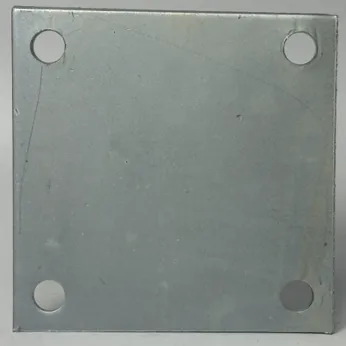loading...
- No. 9, Xingyuan South Street, Dongwaihuan Road, Zaoqiang County, Hengshui, Hebei, China
- admin@zjcomposites.com
- +86 15097380338
- Welcome to visit our website!
fiber reinforced polymer bars
Fiber Reinforced Polymer Bars A Modern Solution for Structural Applications
In recent years, the construction industry has witnessed a significant shift towards innovative materials that enhance structural performance and durability. Among these advancements, Fiber Reinforced Polymer (FRP) bars have emerged as a game-changing solution for concrete reinforcement. Composed of polymer matrices reinforced with fibers such as glass, carbon, or aramid, these bars offer numerous advantages over traditional steel reinforcement.
Fiber Reinforced Polymer Bars A Modern Solution for Structural Applications
Another critical advantage of FRP bars is their excellent resistance to corrosion. Traditional steel reinforcement is prone to rusting and degradation, particularly in environments exposed to moisture, chemicals, and de-icing salts. This corrosion can severely shorten the lifespan of concrete structures and necessitate expensive rehabilitation efforts. In contrast, FRP bars remain unaffected by harsh environmental conditions, significantly extending the service life of reinforced concrete structures. This durability translates to reduced maintenance costs and increased safety for infrastructure such as bridges, parking garages, and tunnels.
fiber reinforced polymer bars

Furthermore, FRP bars exhibit superior fatigue resistance compared to their steel counterparts. In applications subjected to cyclic loads, such as bridges and pavements, the ability of FRP bars to withstand repeated stress without structural failure is crucial. This resilience ensures that structures remain safe and functional even under high levels of stress, minimizing the risk of catastrophic failure and enhancing overall longevity.
In addition to their mechanical properties, FRP bars offer design flexibility that is not attainable with traditional materials. They can be manufactured in various shapes and sizes to accommodate specific engineering requirements, allowing for more innovative design solutions. The aesthetic appeal of FRP bars, available in various finishes and colors, also enables architects to create visually striking structures while maintaining high performance standards.
However, despite the myriad benefits, the adoption of FRP bars is not without challenges. The initial cost of FRP materials can be higher than that of steel, which may deter some builders from considering them as viable alternatives. Furthermore, the bond between FRP bars and concrete is different from that of steel, necessitating careful consideration during design and installation. Engineers must also be well-versed in the properties of FRP materials to ensure that structures meet required safety and performance standards.
In conclusion, Fiber Reinforced Polymer bars represent a significant advancement in construction materials, offering a range of benefits including low weight, corrosion resistance, and high fatigue resistance. While challenges remain in terms of cost and specialized knowledge, the long-term advantages of FRP bars—particularly in durability and maintenance—make them an increasingly attractive option for modern construction projects. As the industry continues to evolve and embrace innovative materials, FRP bars are poised to play a critical role in the future of structural engineering, fostering safer, more sustainable, and aesthetically pleasing built environments.
-
The Rise of FRP Profiles: Strong, Lightweight, and Built to LastNewsJul.14,2025
-
SMC Panel Tanks: A Modern Water Storage Solution for All EnvironmentsNewsJul.14,2025
-
GRP Grating: A Modern Solution for Safe and Durable Access SystemsNewsJul.14,2025
-
Galvanized Steel Water Tanks: Durable, Reliable, and Ready for UseNewsJul.14,2025
-
FRP Mini Mesh Grating: The Safer, Smarter Flooring SolutionNewsJul.14,2025
-
Exploring FRP Vessels: Durable Solutions for Modern Fluid HandlingNewsJul.14,2025
-
GRP Structures: The Future of Lightweight, High-Performance EngineeringNewsJun.20,2025
